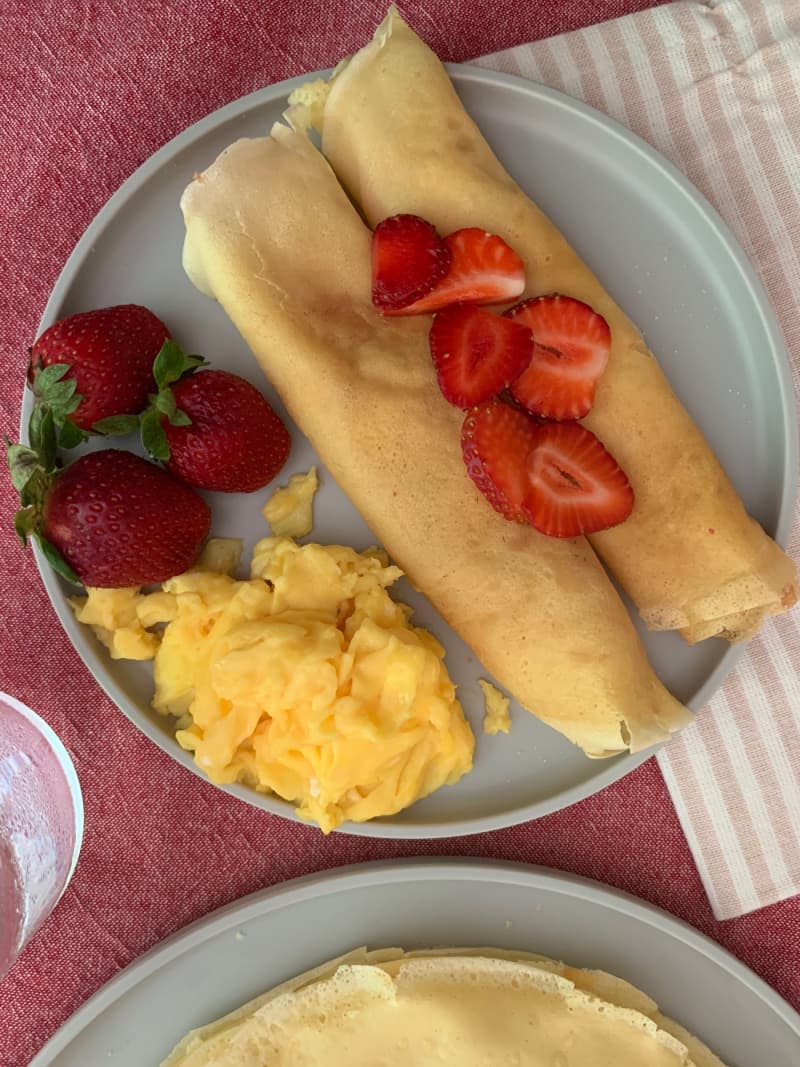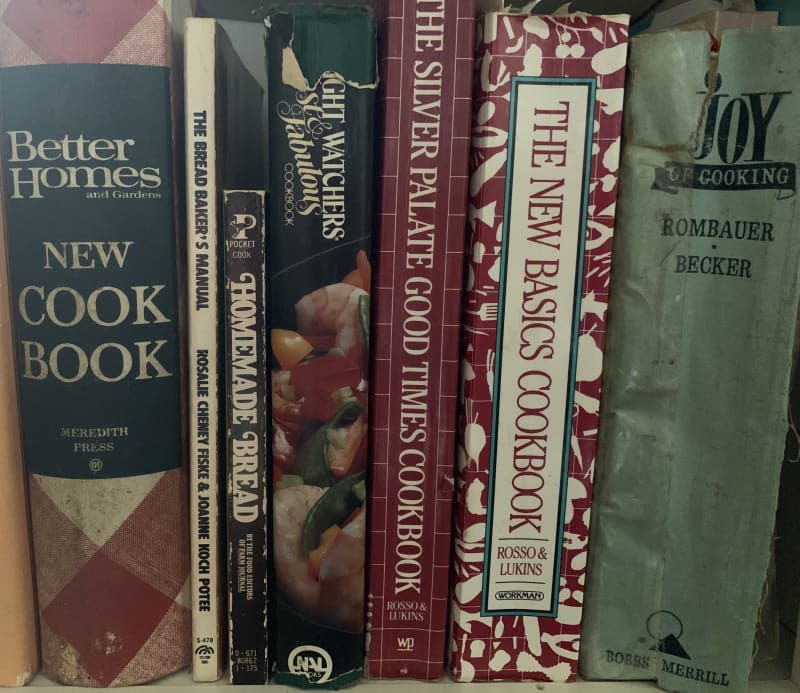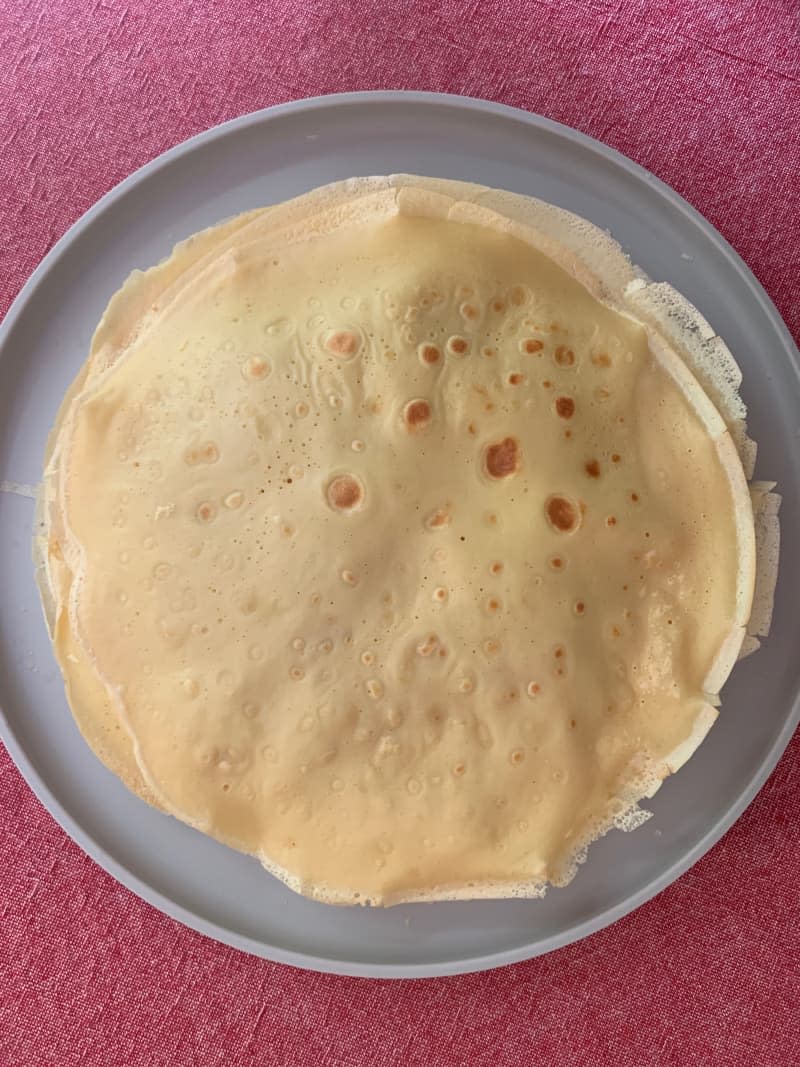The Easy French Breakfast Recipe I’ve Been Making for More than 20 Years

My love affair with crêpes began when I was a kid. On weekends, I’d shuffle down the stairs in my pajamas to find my dad swirling thin batter around a skillet, with an unlikely recipe source — the 1981 Weight Watchers Fast & Fabulous cookbook — propped open on the counter. That’s right: Despite my French-Canadian lineage, my family’s favorite crêpe recipe comes from a Weight Watcher’s cookbook.
I have a soft spot for the recipe, not just because of how delicious it is, but also because these crêpes were the first thing I ever cooked on the stove — and the first breakfast dish I taught my own 5-year-old to make. Mastering the swirling of the batter helped me learn how to maneuver a pan, and by watching carefully for signs that the crêpe was ready to flip, I learned to pay attention to the heat of the burner. (I also learned patience, because as anyone who has made crêpes or pancakes knows, the first one is usually a dud.)
To this day, instead of serving plates filled with bacon, eggs, and fluffy buttermilk pancakes for breakfast, we serve stacks of paper-thin crêpes instead.

Once You Make These Crêpes, You May Never Go Back to Pancakes
Crêpes and pancakes are made with many of the same ingredients, but crêpe batter has more liquid (in the form of milk and eggs) than the standard buttermilk stack.
Crêpe batter is also very flexible, meaning you can use whatever type of milk and eggs are left in the fridge after a busy week. And what I love most about crêpes is that they taste even better if the batter has time to sit, which means you can prep it the night before. I’m sure that’s why we ate them so often growing up, and it’s certainly why I cook them for my family.
While other crêpe recipes are distinctly eggy in flavor, this recipe has just the right ratio of egg to dairy. I have used all types of milk — from whole to skim — with great success. Sometimes I’ll add a splash of vanilla extract or some lemon zest to dress up the batter, and even without any add-ins, these turn out delicious every time.
The Kitchn’s crêpe recipe is almost identical, although it calls for melted butter, which the Weight Watcher’s recipe omits. The batter for both recipes come together in the blender, keeping cleanup to a minimum.

After they’re all done cooking, I like to stack the crêpes on a plate and drape a sheet of foil over them to keep them warm. At the table, I spread them with a pat of butter and a sprinkling of sugar, or a drizzle of Vermont maple syrup (it’s not breakfast at our house without the stuff). And while Parisian crêperies fold crêpes into quarters, I roll them instead, and top them with fresh fruit or a dusting of powdered sugar.
Though the recipe I use has never been printed online, you can re-create it at home by following Kitchn’s crêpe recipe and omitting the melted butter. Remember: making crepes is less about a specific ingredient list and much more about the art of cooking them. Once you try them, I think you’ll be hooked — and find yourself a better cook because of them.
Get the recipe: How to Make Crêpes
This article originally published on The Kitchn. See it there: The Easy French Breakfast Recipe I’ve Been Making for More than 20 Years

